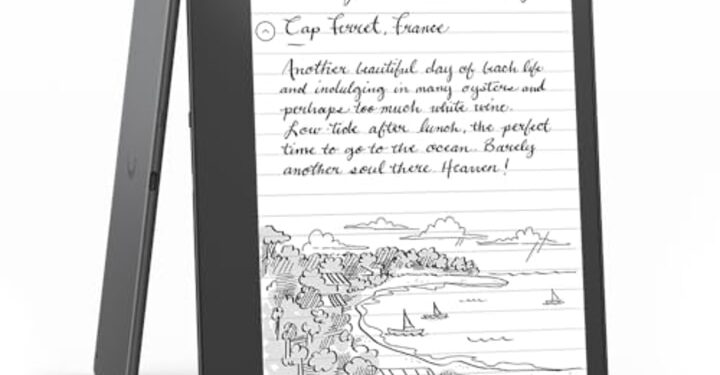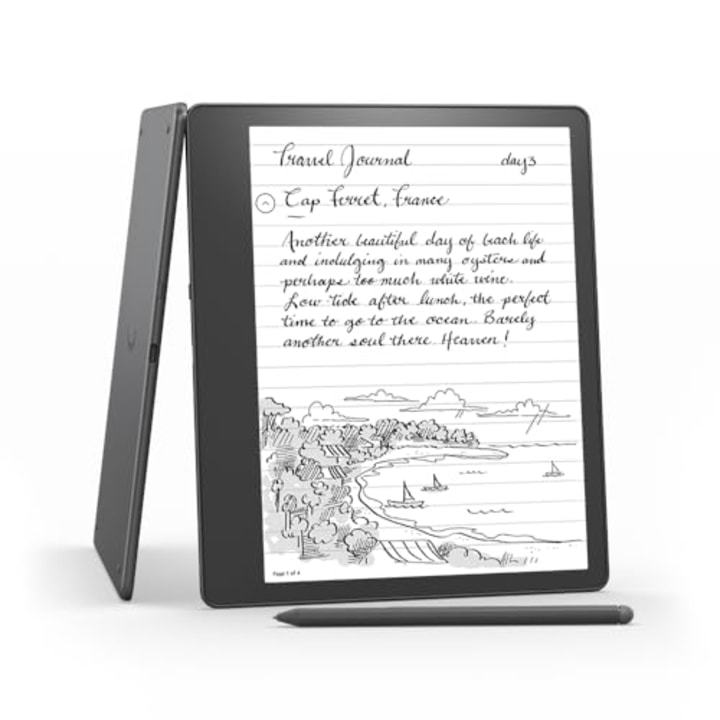As a lifelong reader, I’ve been using Kindles on and off since I was a teen. I studied creative writing in college and instead of lugging around multiple hardcovers and paperbacks, I relied on my Kindle to read books for class and for pleasure. Since then, I’ve carried this admiration for Kindles, my favorite type of e-reader, well into my post-grad life.
As a writer, I’ve been interested in investing in a digital tablet to store my thoughts and ideas in one place, especially when I’m on the go — as opposed to inevitably alternating between random notebooks and my iPhone’s Notes app. Thus, I was thrilled when the brand sent me the Kindle Scribe to test. Below, I share my experience using the Kindle Scribe and what you should know before buying one.
SKIP AHEAD How I tried the Kindle Scribe | My experience with the Kindle Scribe | Who is the Kindle Scribe best for?
What is the Kindle Scribe?
Kindle Scribe
The Kindle Scribe (starts at $339.99) is an e-reader and notebook in one that lets you read and mark up books and documents with text or handwritten notes. It’s the newest addition to Amazon’s Kindle lineup and was released by the company in November 2022. You can use it in place of carrying notebooks and hard copies of books around, allowing you to seamlessly create and store everything in one place.
As with other Kindles, you have immediate access to thousands of books via the Amazon storefront. The Scribe has two main libraries: a book library, where you can explore and download thousands of digital books, and a notebook library, where you can store various handwritten material. The notebook library feature is a new Kindle component specific to the Scribe that you can access as soon as you open your Kindle.
The notebook feature has templates, including blank, ruled and dotted, which you can use to create checklists, planners (daily, weekly and monthly) or a habit tracker.
Depending on which model you buy, the Scribe comes with either a Basic Pen or a Premium Pen for writing and taking notes while reading. Amazon sent me the Premium version, which retails for $30 more than the basic version, and has a built-in eraser and a side-button to create a preferred shortcut. (I set mine to highlight, but you can easily customize this setting and create a shortcut to erase, create sticky notes or activate a different brush type instead.) Both pens have four digital brush types: a ballpoint-pen style, pencil, marker and fountain pen. You can easily alternate between them within the software, and can reduce or increase each one’s thickness. There is also a lasso tool built into the software, which allows you to resize, move, cut, copy and paste notes across various notebooks.
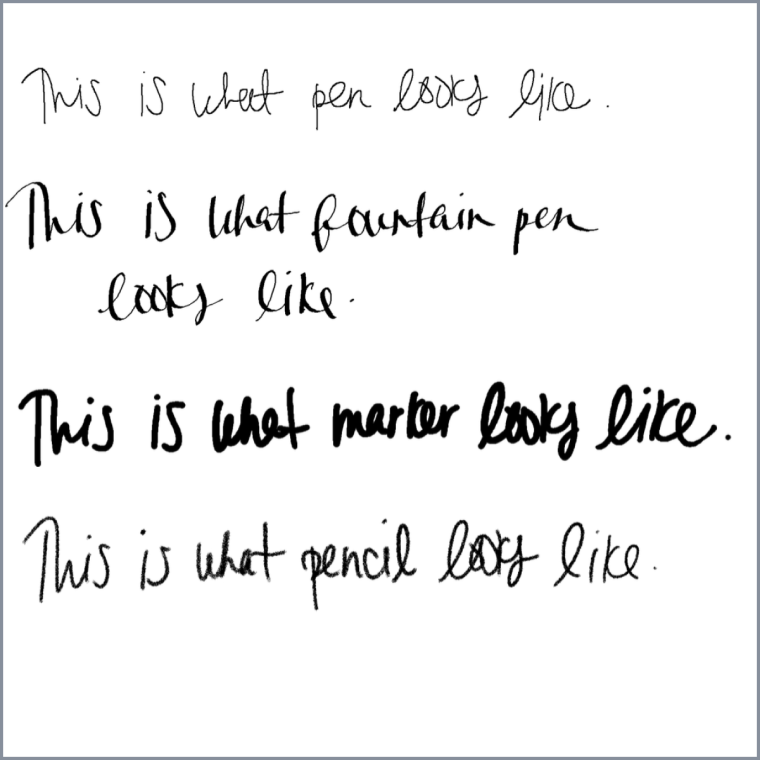
The box includes five replacement tips, which after two months, I have yet to use.You can also easily connect your favorite pair of headphones to the Scribe to listen to Audible if you prefer to listen to audiobooks.
Display size: 7.7 x 9.0 x .22 in. | Weight: 15.3 oz | Battery life: Up to 12 weeks for reading, 3 weeks for writing | Storage: 16 GB, 32 GB or 64 GB | Adjustable lighting: Yes | Waterproof: No
How I tried the Kindle Scribe
For two months, I used the Scribe to journal, read and doodle with the Scribe’s Premium Pen. I’m not new to e-readers: I’ve previously used the Kindle Paperwhite and Kindle Fire (now known as the Amazon Fire tablet), both of which gave me a basic understanding of how Amazon e-reader software works and what I could expect in terms of my reading experience.
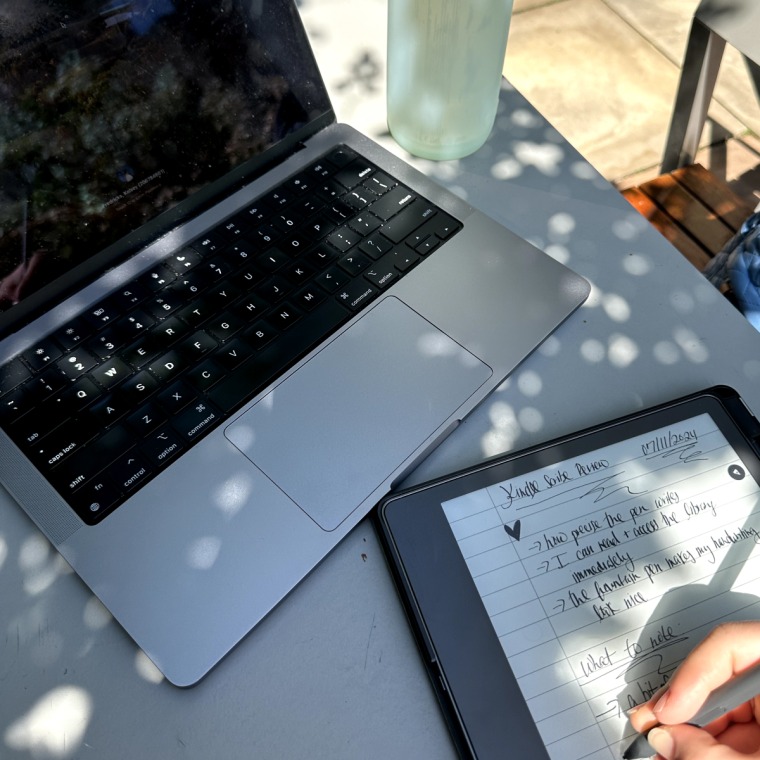
While using the Scribe, I wrote diary entries, grocery and travel packing lists and creative writing exercises several times a week. I traveled with the Scribe on New York City transportation and read frequently both outside in bright daylight and in bed at night. I also ordered a case to help protect my Scribe, which you can also prop up into a stand and angle based on your activity; it has magnetic closure that automatically sets the Scribe into sleep mode when I shut it and wake mode when I open it.
NBC Select editorial projects manager Rebecca Rodriguez also tested the Kindle Scribe for three weeks alongside me. (Amazon sent us both samples).
My experience with the Kindle Scribe
At $339.99, the Kindle Scribe isn’t cheap. It has impressive battery life and a useful glare-free reading display, but it isn’t perfect. Below, I go into further detail about what I like about the e-reader and some things I think you should know.
What I like
Well lit, glare-free display
My two favorite ways to read and write are in my bed at night and at the park on a sunny day, both of which come with challenges. The former is difficult to do with little to no light, and I struggle with glare from too much light with the latter. The Scribe fixes both of these issues.
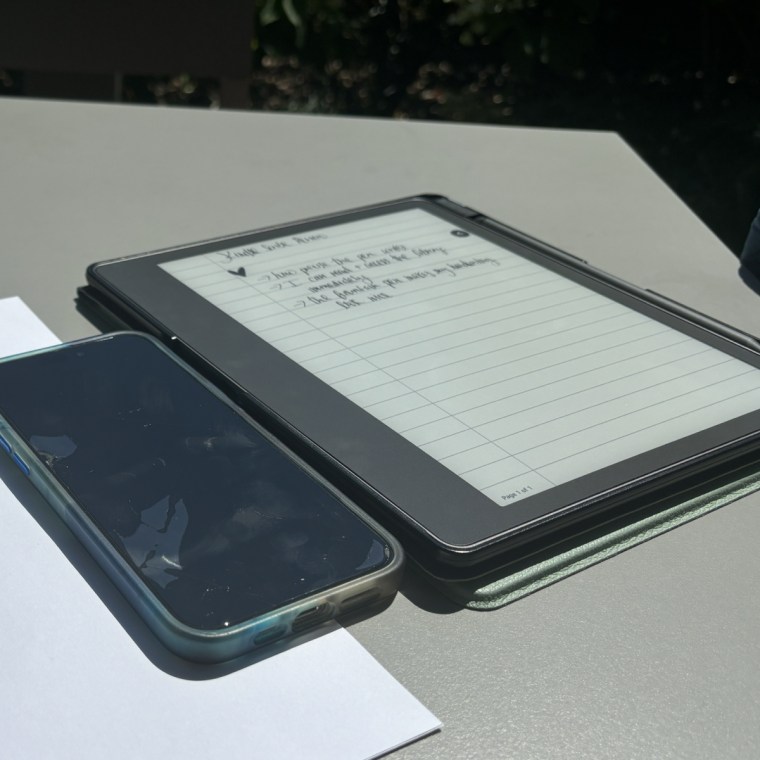
Not only can I manually adjust its brightness and warmth settings, as with other Kindles, but the Scribe’s built-in 35 LED front lights (the most of any Kindle) automatically adjust to my environment. For example, it can sense the amount of light in my environment and adapt its settings based on this, so I don’t have to strain my eyes when reading in bed at night or manually increase the brightness in the morning. (This is a feature the Paperwhite Signature Edition shares, but other Kindles don’t.) “I’ve read books on my phone before and was concerned that the Kindle would put a strain on my eyes after a while, but the anti-glare, paper-like screen makes it easy to read,” says Rodriguez. “I used to have to wear a neck light when I wanted to read after my husband went to sleep, so this is a big win for me.”
Since its display is also glare free, I can use it outside in direct sunlight and still see my screen (something I can’t do using my phone or laptop, which is frustrating when I’m trying to be productive outside).
Satisfying writing experience
I use the Scribe’s notebook section several times a week, typically for at least an hour at a time, and my hand hasn’t cramped the way it does with typical pen and paper. My handwriting on the Scribe looks practically identical to as it does on paper, though I think the Scribe improves it, which I like since my handwriting isn’t the easiest to read.

The pen also adjusts to any thickness changes in the nib itself, so it feels like I’m using a real writing instrument. Even though the pen is precise, the screen isn’t too sensitive to my touch, which I appreciate. It’s also seamless to switch between the pen’s multiple brush types for sketching, journaling and writing to-do lists.
“The pen is very responsive and it truly does feel like writing on paper,” says Rodriguez. “I was surprised by how smooth it felt.”
Templates and folders are easy to use
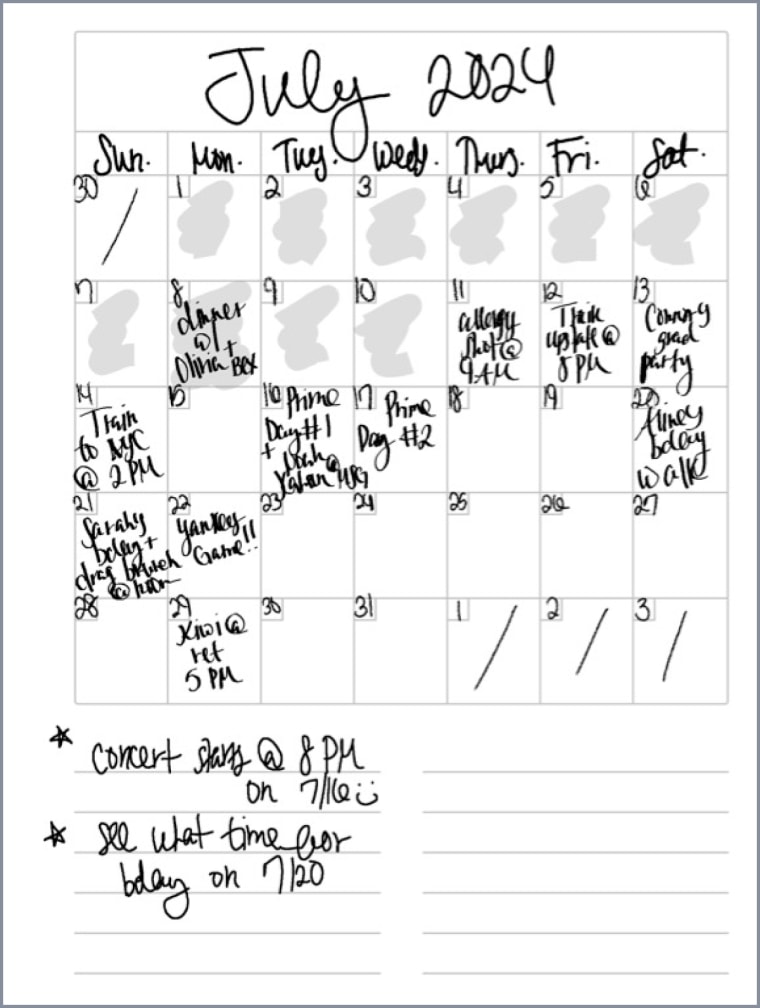
I’ve been using my Scribe to write story ideas, poems and create lists for grocery shopping and travel and I like how I can keep my work organized into folders. You can infinitely scroll to add more pages — so I didn’t need to worry about running out of space.
I used the checklist template to store my work tasks, and liked using the lined template right next to it to organize any thoughts and concerns with my to-do list. You can also download gratitude or wellness journals to fill in.
Customizable reading experience
Since it’s a relatively large device to hold, I love that I can read books in portrait or landscape mode — depending on my mood and what and where I’m reading. I enjoy reading fiction books in landscape mode while taking public transportation and resting the Scribe on my lap, whereas I prefer portrait mode while lying down in bed and placing my Scribe on the treadmill at my gym. I can also adjust the font type, how bold the text is and the size of the text.
Convert notes and send PDFs
With the Scribe, I can send PDFs from the internet directly to my device and mark them up. It can also convert my handwritten notes into plain text for me, and send them to my email. In my experience, any notes I’ve sent have arrived to my inbox within seconds, and the Scribe can transcribe most of my handwriting (which isn’t the neatest) into plain text. There are some minimal transcribing errors when it does this, but it’s a convenient feature for sending my handwritten notes to my laptop to later review and revise them in a Google document.
Long battery life
I’ve only had to charge the Scribe about three times in the two months I’ve been testing it. Unlike my iPhone, when my Scribe is at 20%, I know I have more than a couple hours left of use. It has the longest battery life of any Kindle, according to Amazon, which feels accurate based on my experience using it so far. This was especially helpful when I traveled with it to Europe — I didn’t have to worry about bringing my charging cable and adapter with me.
Potential drawbacks to keep in mind
Size
The one-pound Kindle Scribe is only available in a 10.2-inch display, which isn’t the most compact. For comparison, the standard Kindle comes with a 6-inch display and the Kindle Paperwhite comes in a 6.8-inch display. Apple’s 10th generation iPad has a 10.9-inch display — the most comparable device to the Kindle Scribe in terms of size.

“As much as I have been enjoying reading on the Kindle Scribe, in retrospect I think I would have preferred the Paperwhite, mostly because of the size,” says Rodriguez. “The Scribe is quite large so it’s not as easy to fit in some of my everyday bags, and I don’t like feeling like I have to use two hands to hold it up and read.”
To make up for its large size, I typically rest it on my lap when traveling and use my case’s to prop it up when writing and reading. I don’t find it uncomfortable to use, but I do have to use two hands instead of one to hold it, in comparison to my Paperwhite.
Limited annotation capabilities
While the Scribe allows me to mark up PDFs and other documents, I can’t write in the margins while reading books. I would have loved to jot down a quick note in the margins of a book without having to open its sticky note feature. I can’t merely look at the book’s plain text and see my handwriting within the margins; there’s an extra step required to see my notes, which feels a bit inconvenient.
Laggy software
Switching between the writing section and reading section isn’t the quickest experience. It doesn’t take minutes to load, but the device doesn’t jump around as efficiently as, say, my iPhone does. There’s a bit of a lag that takes some getting used to.
Pricey
The Kindle Scribe is expensive compared to other e-readers, even other Kindles. The original Kindle with basic features retails for $99.99, Kindle Kids retails for $119.99, the Paperwhite retails for $149.99 while the Paperwhite Signature Edition (which includes wireless charging) retails for $189.99. Some other top e-reader options, like the Kobo Libra 2 and the Pocketbook Touch HD 3 are also cheaper than the Kindle (at $199.99 and $139, respectively). None of them however, come with the pen or ability to also use it as a writing tool.
Who is the Kindle Scribe best for?
Amazon’s Kindle Scribe is a great device for anyone who wants immediate access to a virtual bookstore (whether through your library card or otherwise) and someone looking for an all-in-one device that you can also write, annotate and draw on. It’s ideal for someone who wants a distraction-free device since you can’t load social media or streaming apps on it.
It’s no substitute for an iPad or iPhone, as it doesn’t have all the same components as these devices, like a camera, cellular data or app store.
If you don’t plan on using the included notebook and annotation components, you can opt for the lesser-priced Kindle Paperwhite, which has the same reading and audiobook components. If you’re looking for something a little more tech-forward in terms of its features, a tablet — like Apple iPad or Google Pixel — might be a better option, though they don’t have anti-glare and aren’t specifically designed for reading.
Why trust NBC Select?
I am a production coordinator at NBC Select who also covers sales and deals. For this story, I used the Kindle Scribe for two months, paying particular attention to how smooth the pen wrote, how quickly the software loads and how helpful the writing templates are. I also researched other popular tablets and e-readers on the market.
Catch up on NBC Select’s in-depth coverage of personal finance, tech and tools, wellness and more, and follow us on Facebook, Instagram, Twitter and TikTok to stay up to date.

